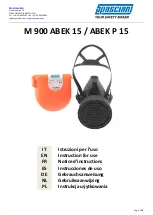
Description
Measurement Specification
13
1
1 Description
The CS400 system is a comprehensive temperature measurement system for the monitoring, control, and analysis
of rotating kiln shells used in cement and lime production, mineral processing, hazardous waste incineration and
other processes. This system is a unique combination of hardware centered on the industry-leading
MP linescanner and a powerful, industrial software package. The system allows accurate monitoring of the kiln
shell and early detection of hot spots indicating damaged or missing refractory bricks, preventing costly kiln
damage and extending production runs.
Figure 1-1: Linescanner
The key component of the CS400 system is the infrared linescanner. The linescanner collects infrared energy,
emitted from the kiln surface allowing the system to measure the temperature along the length of the kiln.
The CS400 system provides many features, which include full-color thermograms of the kiln surface, user defined
alarms, I/O module support, and extensive historical data analysis capability. The CS400 system also adds OPC
server functionality and full integration of all available accessories. Most notably, additional point sensors can be
installed and configured to monitor portions of the kil
n “shadowed” from the main sensor by physical obstructions
and the results displayed as one homogenous thermogram. Similarly, a separate sensor is available to monitor
the burning zone of the kiln and again the data will be seamlessly incorporated into one common display in the
control room.
Using an optical fiber cable from the scanner in the field to the PC Ethernet interface in the control room is a reliable
way for connecting. Using fiber optics, you can prevent electrical interference from corrupting the CS400 system.
The optical fiber cable supports high speeds and long-distance transmissions (up to 2 km / 1.2 mi). One fiber optic
communication line only from the field to the control room minimizes the installation efforts on-site.
For a complete system overview see section 8.2














































